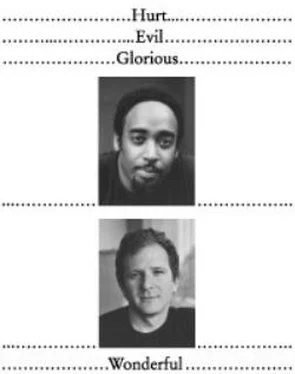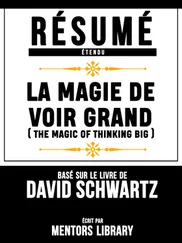Malcolm Gladwell - Blink - The Power of Thinking Without Thinking
Здесь есть возможность читать онлайн «Malcolm Gladwell - Blink - The Power of Thinking Without Thinking» весь текст электронной книги совершенно бесплатно (целиком полную версию без сокращений). В некоторых случаях можно слушать аудио, скачать через торрент в формате fb2 и присутствует краткое содержание. Жанр: Культурология, Психология, на английском языке. Описание произведения, (предисловие) а так же отзывы посетителей доступны на портале библиотеки ЛибКат.
- Название:Blink: The Power of Thinking Without Thinking
- Автор:
- Жанр:
- Год:неизвестен
- ISBN:нет данных
- Рейтинг книги:3 / 5. Голосов: 1
-
Избранное:Добавить в избранное
- Отзывы:
-
Ваша оценка:
- 60
- 1
- 2
- 3
- 4
- 5
Blink: The Power of Thinking Without Thinking: краткое содержание, описание и аннотация
Предлагаем к чтению аннотацию, описание, краткое содержание или предисловие (зависит от того, что написал сам автор книги «Blink: The Power of Thinking Without Thinking»). Если вы не нашли необходимую информацию о книге — напишите в комментариях, мы постараемся отыскать её.
Blink: The Power of Thinking Without Thinking — читать онлайн бесплатно полную книгу (весь текст) целиком
Ниже представлен текст книги, разбитый по страницам. Система сохранения места последней прочитанной страницы, позволяет с удобством читать онлайн бесплатно книгу «Blink: The Power of Thinking Without Thinking», без необходимости каждый раз заново искать на чём Вы остановились. Поставьте закладку, и сможете в любой момент перейти на страницу, на которой закончили чтение.
Интервал:
Закладка:
These kinds of mistakes were not anomalous events. Mind-reading failures happen to all of us. They lie at the root of countless arguments, disagreements, misunderstandings, and hurt feelings. And yet, because these failures are so instantaneous and so mysterious, we don’t really know how to understand them. In the weeks and months that followed the Diallo shooting, for example, as the case made headlines around the world, the argument over what happened that night veered back and forth between two extremes. There were those who said that it was just a horrible accident, an inevitable by-product of the fact that police officers sometimes have to make life-or-death decisions in conditions of uncertainty. That’s what the jury in the Diallo trial concluded, and Boss, Carroll, McMellon, and Murphy were all acquitted of murder charges. On the other side were those who saw what happened as an open-and-shut case of racism. There were protests and demonstrations throughout the city. Diallo was held up as a martyr. Wheeler Avenue was renamed Amadou Diallo Place. Bruce Springsteen wrote and performed a song in his honor called “41 Shots,” with the chorus “You can get killed just for living in your American skin.”
Neither of these explanations, however, is particularly satisfying. There was no evidence that the four officers in the Diallo case were bad people, or racists, or out to get Diallo. On the other hand, it seems wrong to call the shooting a simple accident, since this wasn’t exactly exemplary police work. The officers made a series of critical misjudgments, beginning with the assumption that a man getting a breath of fresh air outside his own home was a potential criminal.
The Diallo shooting, in other words, falls into a kind of gray area, the middle ground between deliberate and accidental. Mind-reading failures are sometimes like that. They aren’t always as obvious and spectacular as other breakdowns in rapid cognition. They are subtle and complex and surprisingly common, and what happened on Wheeler Avenue is a powerful example of how mind reading works—and how it sometimes goes terribly awry.
Much of our understanding of mind reading comes from two remarkable scientists, a teacher and his pupil: Silvan Tomkins and Paul Ekman. Tomkins was the teacher. He was born in Philadelphia at the turn of the last century, the son of a dentist from Russia. He was short and thick around the middle, with a wild mane of white hair and huge black plastic-rimmed glasses. He taught psychology at Princeton and Rutgers and was the author of Affect, Imagery, Consciousness, a four-volume work so dense that its readers were evenly divided between those who understood it and thought it was brilliant and those who did not understand it and thought it was brilliant. He was a legendary talker. At the end of a cocktail party, a crowd of people would sit rapt at Tomkins’s feet. Someone would say, “One more question!” and everyone would stay for another hour and a half as Tomkins held forth on, say, comic books, a television sitcom, the biology of emotion, his problem with Kant, and his enthusiasm for the latest fad diets—all enfolded into one extended riff.
During the Depression, in the midst of his doctoral studies at Harvard, he worked as a handicapper for a horse-racing syndicate and was so successful that he lived lavishly on Manhattan’s Upper East Side. At the track, where he sat in the stands for hours staring at the horses through binoculars, he was known as “the professor.” “He had a system for predicting how a horse would do, based on what horse was on either side of him, based on their emotional relationship,” Ekman remembers. If a male horse, for instance, had lost to a mare in his first or second year, he would be ruined if he went to the gate with a mare next to him in the lineup. (Or something like that—no one really knew for certain.)
Tomkins believed that faces—even the faces of horses—held valuable clues to inner emotions and motivations. He could walk into a post office, it was said, go over to the Wanted posters, and, just by looking at the mug shots, say what crimes the various fugitives had committed. “He would watch the show To Tell the Truth, and without fail he could always pick out the people who were lying,” his son Mark recalls. “He actually wrote the producer at one point to say it was too easy, and the man invited him to come to New York, go backstage, and show his stuff.” Virginia Demos, who teaches psychology at Harvard, recalls having long conversations with Tomkins during the 1988 Democratic National Convention. “We would sit and talk on the phone, and he would turn the sound down while, say, Jesse Jackson was talking to Michael Dukakis. And he would read the faces and give his predictions on what would happen. It was profound.”
Paul Ekman first encountered Tomkins in the early 1960s. Ekman was then a young psychologist just out of graduate school, and he was interested in studying faces. Was there a common set of rules, he wondered, that governed the facial expressions that human beings made? Silvan Tomkins said that there was. But most psychologists said that there wasn’t. The conventional wisdom at the time held that expressions were culturally determined—that is, we simply used our faces according to a set of learned social conventions. Ekman didn’t know which view was right, so, to help him decide, he traveled to Japan, Brazil, and Argentina—and even to remote tribes in the jungles of the Far East—carrying photographs of men and women making a variety of distinctive faces. To his amazement, everywhere he went, people agreed on what those expressions meant. Tomkins, he realized, was right.
Not long afterward, Tomkins visited Ekman at his laboratory in San Francisco. Ekman had tracked down a hundred thousand feet of film that had been shot by the virologist Carleton Gajdusek in the remote jungles of Papua New Guinea. Some of the footage was of a tribe called the South Fore, who were a peaceful and friendly people. The rest was of the Kukukuku, a hostile and murderous tribe with a homosexual ritual in which preadolescent boys were required to serve as courtesans for the male elders of the tribe. For six months, Ekman and his collaborator, Wallace Friesen, had been sorting through the footage, cutting extraneous scenes, focusing just on close-ups of the faces of the tribesmen in order to compare the facial expressions of the two groups.
As Ekman set up the projector, Tomkins waited in the back. He had been told nothing about the tribes involved; all identifying context had been edited out. Tomkins looked on intently, peering through his glasses. At the end of the film, he approached the screen and pointed to the faces of the South Fore. “These are a sweet, gentle people, very indulgent, very peaceful,” he said. Then he pointed to the faces of the Kukukuku. “This other group is violent, and there is lots of evidence to suggest homosexuality.” Even today, a third of a century later, Ekman cannot get over what Tomkins did. “My God! I vividly remember saying, ‘Silvan, how on earth are you doing that?’” Ekman recalls. “And he went up to the screen, and, while we played the film backward in slow motion, he pointed out the particular bulges and wrinkles in the faces that he was using to make his judgment. That’s when I realized, ‘I’ve got to unpack the face.’ It was a gold mine of information that everyone had ignored. This guy could see it, and if he could see it, maybe everyone else could, too.”
Ekman and Friesen decided, then and there, to create a taxonomy of facial expressions. They combed through medical textbooks that outlined the facial muscles, and they identified every distinct muscular movement that the face could make. There were forty-three such movements. Ekman and Friesen called them action units. Then they sat across from each other, for days on end, and began manipulating each action unit in turn, first locating the muscle in their minds and then concentrating on isolating it, watching each other closely as they did, checking their movements in a mirror, making notes on how the wrinkle patterns on their faces would change with each muscle movement, and videotaping the movement for their records. On the few occasions when they couldn’t make a particular movement, they went next door to the UCSF anatomy department, where a surgeon they knew would stick them with a needle and electrically stimulate the recalcitrant muscle. “That wasn’t pleasant at all,” Ekman recalls.
Читать дальшеИнтервал:
Закладка:
Похожие книги на «Blink: The Power of Thinking Without Thinking»
Представляем Вашему вниманию похожие книги на «Blink: The Power of Thinking Without Thinking» списком для выбора. Мы отобрали схожую по названию и смыслу литературу в надежде предоставить читателям больше вариантов отыскать новые, интересные, ещё непрочитанные произведения.
Обсуждение, отзывы о книге «Blink: The Power of Thinking Without Thinking» и просто собственные мнения читателей. Оставьте ваши комментарии, напишите, что Вы думаете о произведении, его смысле или главных героях. Укажите что конкретно понравилось, а что нет, и почему Вы так считаете.












